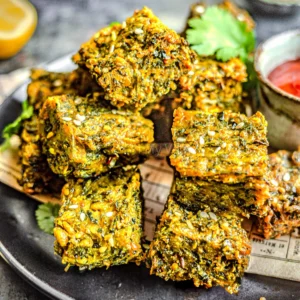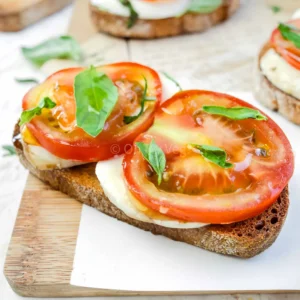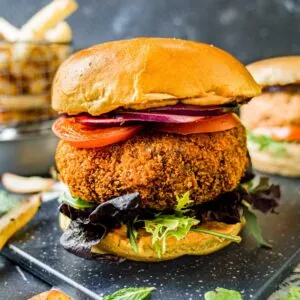Sabudana Vada (Special Upvas Recipe)
This authentic Maharashtrian recipe for sabudana vada is crispy on the outside, soft on the inside, and punctured with the nutty, toasted flavour of roasted peanuts, earthy cumin, zesty coriander, and subtle sweetness. The tapioca pearl fritters are light, almost melt-in-the-mouth, and so moreish that I could eat five in one sitting.

Have you tried cooking with tapioca pearls? They’ve achieved global trending status with the upsurge of boba, but did you know that sabudana, as it’s called in India, is a vital ingredient for Hindu fasts?
Honestly, I was hesitant to try tapioca pearls when I first made sabudana khichdi all those years ago. I’m sure many people feel the same way — But believe me when I tell you that sabudana vada is now one of my all-time favourite breakfast recipes. I eat the crispy patties all year round, not just during fasts. They’re just that good.
To know what true joy feels like, curl up on the sofa with a cup of steaming hot tea and a plate of sabudana vada …
For those of you who have tried Indian snacks before, you’ll know that they offer unrivalled flavour and texture combinations.
Make sure to read my entire post to learn all the insider tips and tricks you need to know to make the best sabudana vada, sidestepping common mistakes. I don’t know about you, but I can’t wait to tuck into a plate of steaming hot sago vada — so let’s dive into the recipe and get cooking!
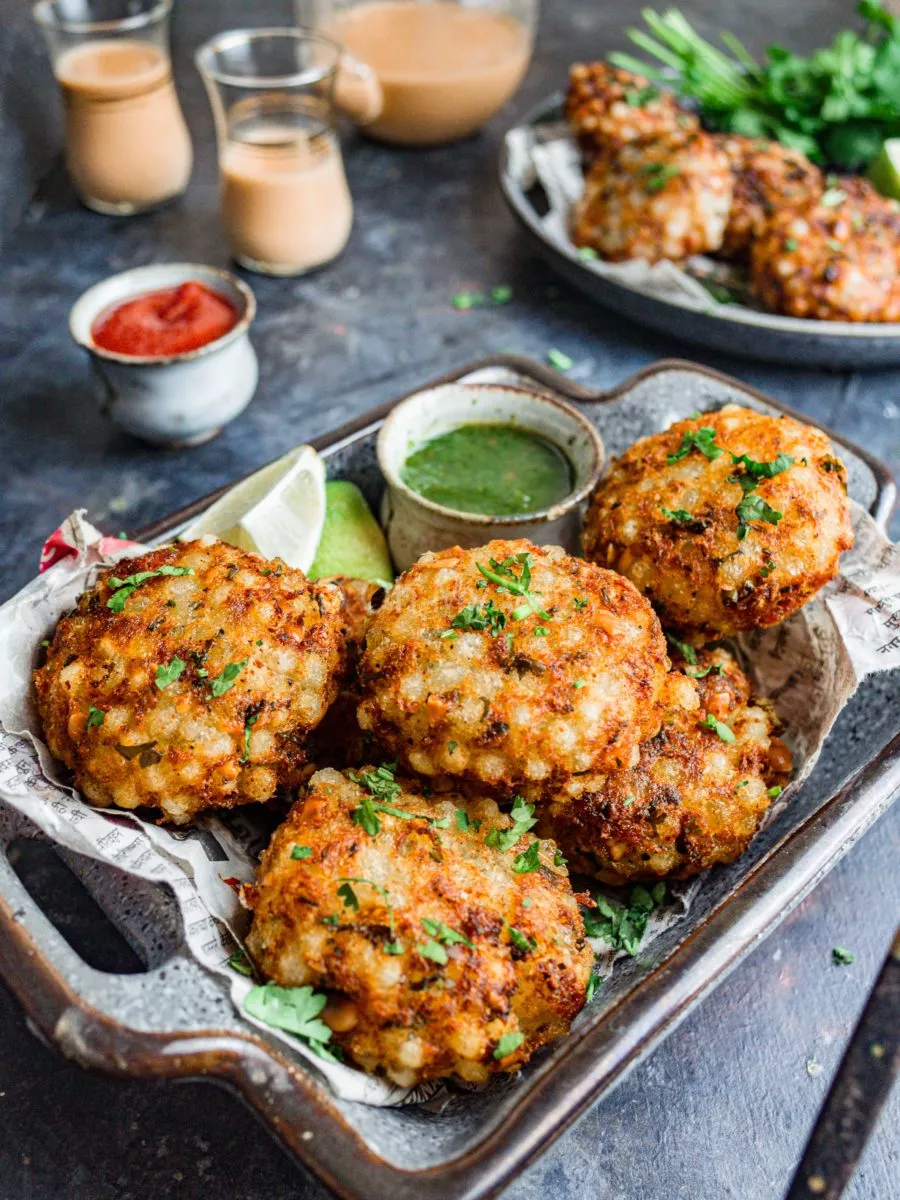
Are Sabudana Vada Vegan, Gluten-Free, Nut-Free, and Soy-Free?
This crispy tapioca patty recipe is vegan, dairy-free, gluten-free, and soy-free! Knowing that authentic Maharashtrian sabudana tikki fulfils multiple dietary requirements makes me love the dish even more, and it’s one of the primary reasons this recipe is in rotation in my home.
However, crispy sago vada is not nut-free. Like most Maharashtrian recipes, it makes use of crunchy roasted peanuts. You can leave the nuts out of this recipe, but they add a unique flavour and texture. Replacing these qualities can be tricky, but I recommend using roughly chopped roasted beans; chickpeas, cannellini beans, or butter beans all roast nicely.
What makes sabudana vada gluten-free? Sabudana is derived from tapioca starch, which is naturally gluten-free. Our other main ingredient, potatoes, serves as a binding ingredient — meaning there’s no need for any flour.
What is Sabudana Vada Made Of?
- Sabudana, also known as sago or tapioca pearls, are made from a starch called tapioca (cassava root). While sago typically refers to pearls from palm starch, in India, sago almost exclusively means tapioca pearls. Popularised in India as a cheap and filling carbohydrate, it’s now one of the most common fasting foods. Sabudana makes up the basis of this recipe, transforming into a gorgeous crispy texture when fried. There are three main sizes of sabudana you can buy: small, medium, and large. For this recipe, preferably opt for medium.
- Potato, when mashed, is the binding ingredient that holds the sago vada together. Its soft and fluffy texture contrasts beautifully with the crispy, crunchy exterior.
- Green Chili adds mild spice with a floral, herby undertone. I nearly always use jwala chilis.
- Fresh Coriander, or cilantro, brings fresh herbiness and a pleasant zestiness to the recipe.
- Cumin Seeds bring gentle earthiness.
- Peanuts are essential for the crunchy texture and fragrant, toasted flavor.
- Sugar — just a pinch — balances and enhances other flavors in the sago vada.
- Himalayan rock salt is, of course, essential. Always season your meals! Because this is a fasting recipe, I use rock salt (sendha namak) instead of ordinary table salt or sea salt.
- Lime or lemon juice adds much-needed acidity to contrast with the nutty, spicy notes of the recipe.
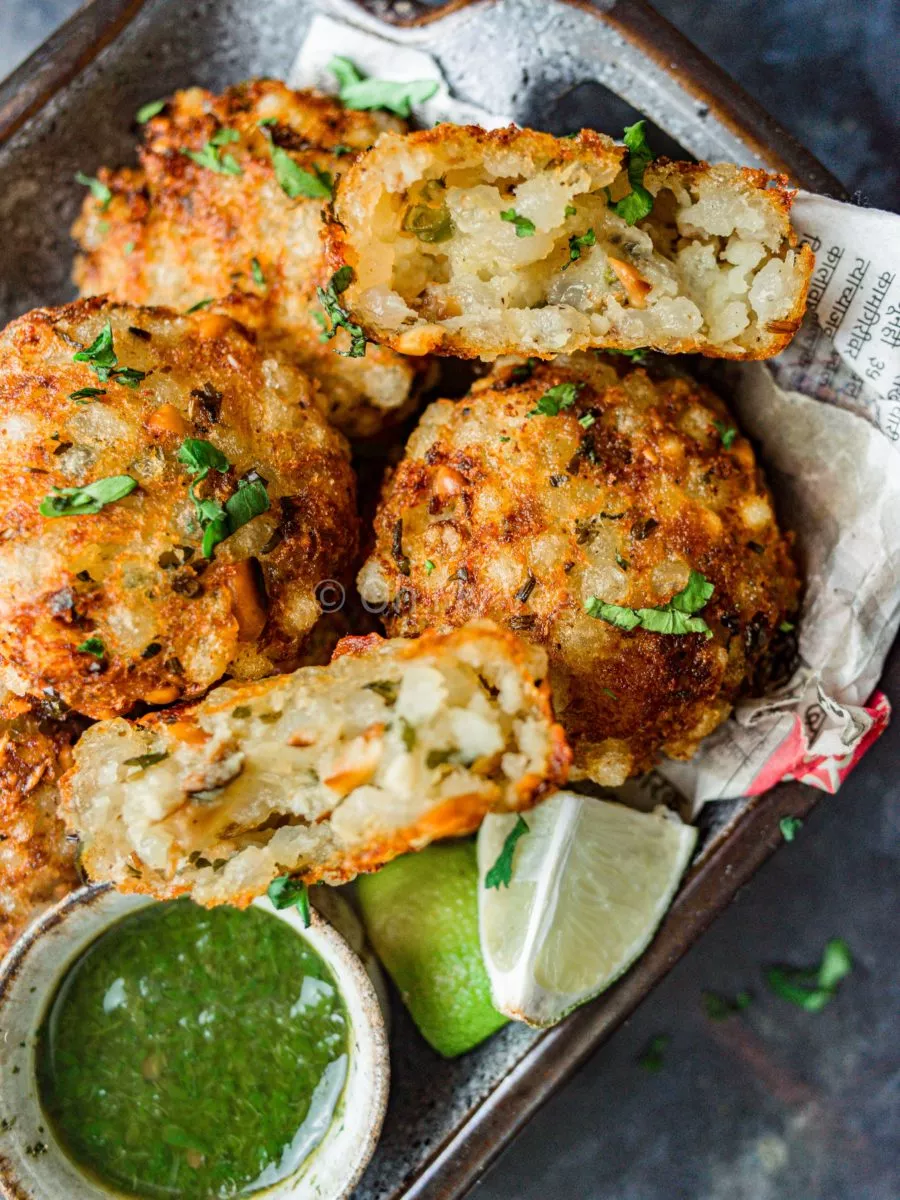
Why Is Sabudana Vada a Popular Snack During Fasting Periods?
Crispy sabudana vada is one of the most popular Upvas recipes! Along with sabudana khichdi, eating this dish has become a modern tradition during the upvas (fasting) periods.
While some people entirely abstain from cooking and eating on fasting days, a more significant percentage of the population merely refrains from eating specific foods.
During the Hindu festivals of Navratri, Mahashivrati, Ekadashi, and Janmashtami, fasting is commonplace, and religious adherents avoid wheat flour, rice, semolina, pulses, and cornflour. Furthermore, onion, garlic, intoxicants (such as alcohol), and meat are considered “tamasic” by Aryuvedia and should be avoided at all costs.
Sabudana is one of the few ingredients not prohibited during upvas, as are potatoes. While there are other options, sabudana is particularly beloved as it’s so carbohydrate-heavy, meaning you’ll stay full for longer and have plenty of energy — both vital during fasting periods!
This sabudana vada for fasting days also uses rock salt (sendha namak) and avoids turmeric. That makes it the perfect snack or breakfast sabudana vada recipe for Navrati!
Can Sabudana Vada Be Baked Instead of Fried?
Yes! Authentic Maharashtrian sabudana vada is fried, but if you’re health-conscious, you may want to try oven-baked sabudana vada or even air-fried sabudana vada. Here are some healthy sabudana vada variations:
- To bake sabudana vada, form the patties as per the recipe. Line a sheet pan with parchment/baking paper, and lightly brush the sago vada with oil. Bake at 220 degrees Celcius (425 degrees Fahrenheit) for around an hour, carefully turning the patties halfway through baking.
- To air-fry sabudana vada, preheat your air fryer to 200 degrees Celsius (395 degrees Fahrenheit) and brush the basket with oil. Place the sabudana vada in the basket, brush the tops with more oil, then cook for 20-30 minutes or until golden. Turn them halfway through cooking.
- To cook sabudana vada in an appe pan, otherwise known as an appam pan, paniyaram pan, or paniyarakkal pan, add a little oil to the pan. Shape your sabudana vada into small balls instead of patties. Once the oil is hot, place the sabudana vada balls into the pan. Cook for around 2 minutes on each side or until golden, then turn.
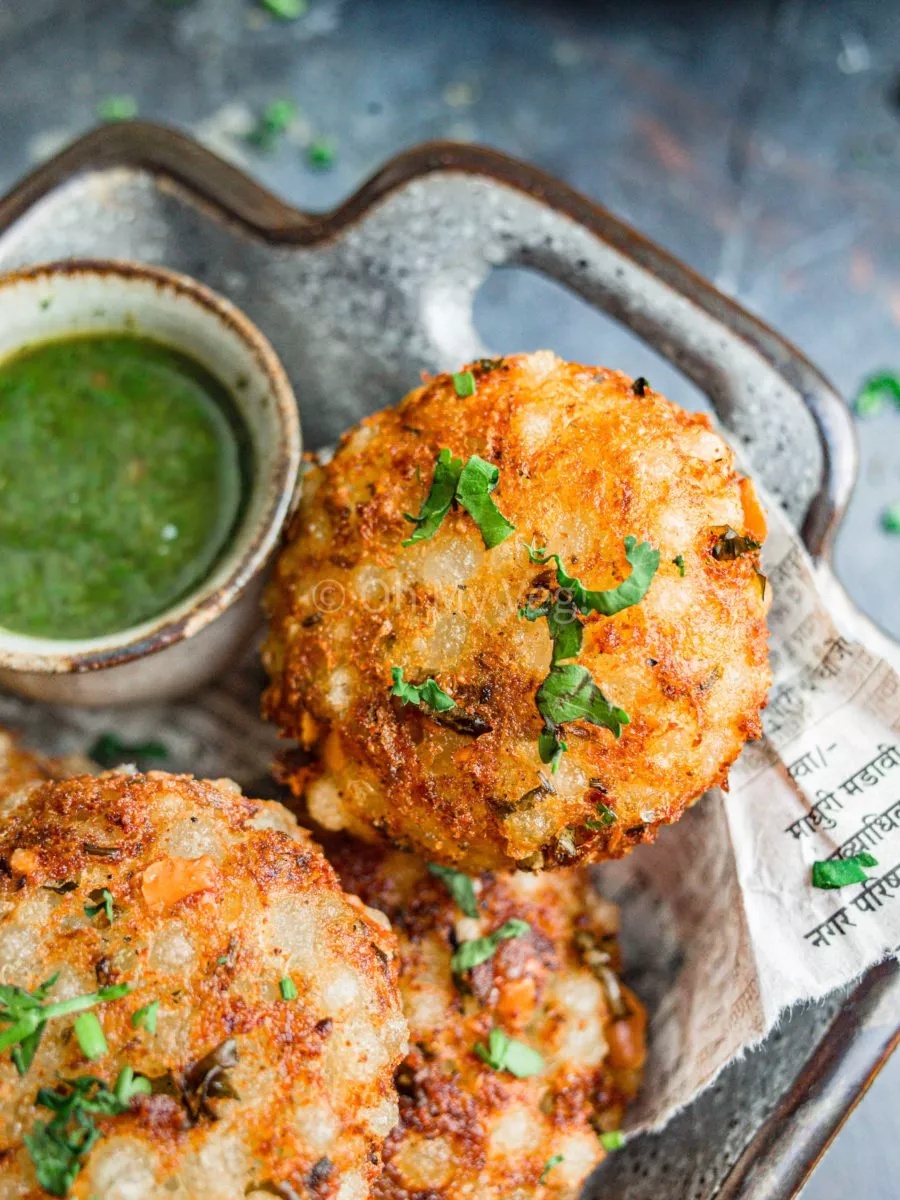
How to Make Sabudana Vada
- Soak the sabudana overnight. Yes, this vegan sabudana vada recipe requires some advance preparation. It’s essential to soak the sabudana for at least 5-6 hours — for convenience, I usually do this overnight. There are no shortcuts here.
- Boil the potatoes. You can also steam or microwave the potatoes if you like. It’s important that they’re soft and mash easily.
- Make the mixture. To the potatoes, add the sabudana, chopped green chilis, fresh coriander, cumin seeds, roasted peanuts, salt, sugar, and lime juice.
- Shape the patties into crispy sago vada.
- Cook the sabudana vada by deep-frying, oven-baking, air-frying, or shallow frying in an appe pan.
Tips To Make Authentic Sabudana Vada from Maharashtra
- Soak the sabudana with the specified amount of water. Ideally, we want to avoid draining excess water from the tapioca pearls, as any remaining moisture may cause the sabudana vada to break. Follow the recipe exactly and the tapioca pearls will absorb all the water while developing a lovely soft texture.
- Check the sabudana to ensure it’s properly soaked. When you press one of the tapioca pearls between your fingers, it should break without much resistance. Otherwise, they may need additional time — If they’re on the edge of being ready, I find that pouring boiling water over the sabudana and then draining them can do the job.
- Drain the potatoes thoroughly after boiling. Similar to the above point, we want to sidestep any issues with our sabudana tikki breaking.
- Crush the peanuts in a mortar and pestle for the desired coarse texture. We want to be able to feel the crunch of the peanuts, and this is much easier to achieve in a traditional mortar and pestle than a mixer grinder.
- Chill the sabudana vada before frying. This was the BIGGEST GAMECHANGER for me. Chilling your vegan sabudana vada for 10 minutes (or longer) in the fridge before frying allows the patties to firm up, making them less likely to break.
- Heat the oil properly to ensure the vada doesn’t soak up excess oil and become greasy. This also helps to prevent breakage.
- Don’t overcrowd the vada while frying, as they may stick together.
- Don’t move the vada too early, as your spoon can break the surface of the fritters, and they will start to disintegrate.
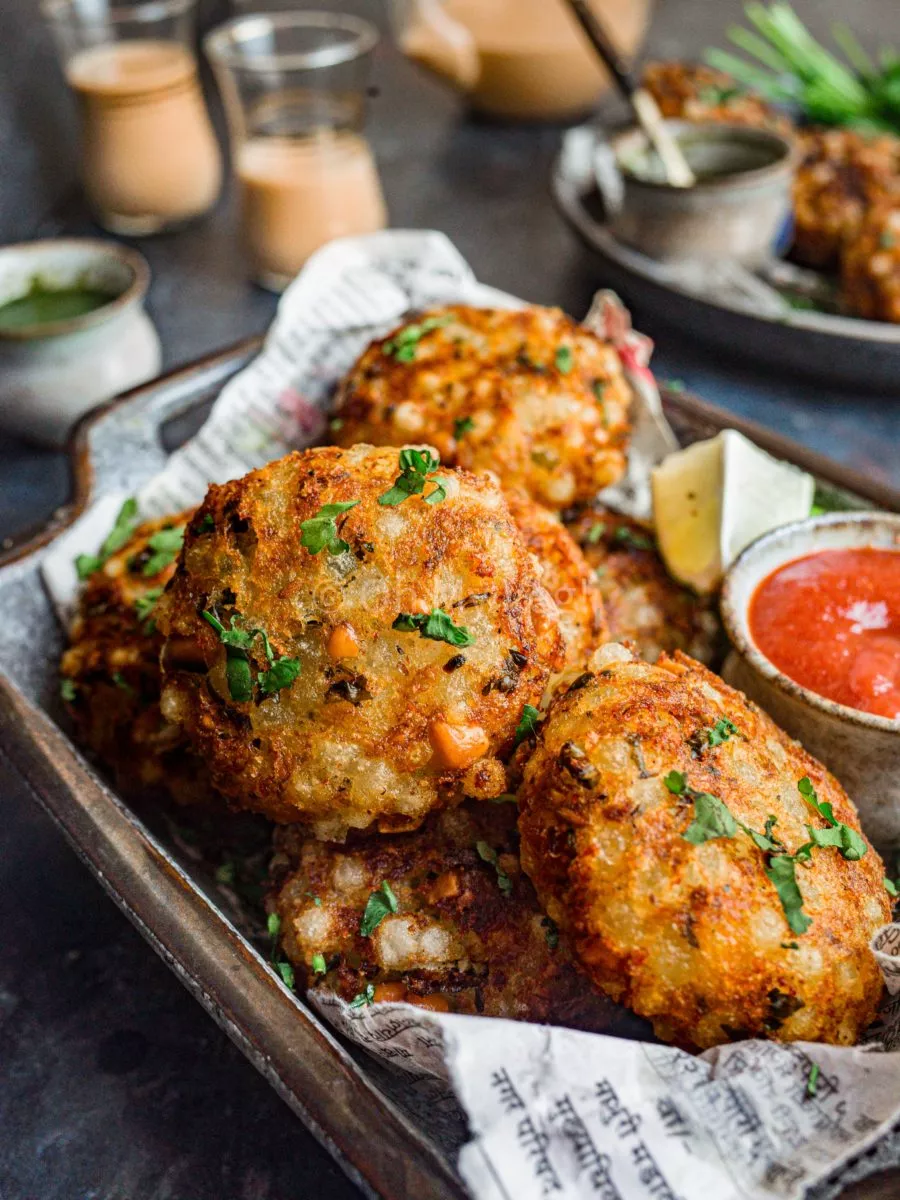
Troubleshooting Sabudana Vada
After many years of making crispy sabudana vada, I’ve had the recipe perfected for some time — but when I first started cooking the Maharashtrian snack, I made my fair share of blunders. It made me wonder: What are common mistakes other people experience when making sabudana vada, and how can I troubleshoot them?
- Why is my sabudana vada breaking in bio? It’s likely that sabudana vada breaking in oil is one of the most common issues. Firstly, if your sabudana isn’t soaked, firmer pearls can burst in the oil, rupturing the patties. Additionally, excess water from the tapioca pearls or the potatoes can cause the sabudana tikki to break as they aren’t bound together, making them more likely to break. Finally, turning the sago vada too soon can rupture the surface and cause it to disintegrate.
- What to do if sabudana isn’t soaked properly? Please do not go ahead with the recipe until your tapioca pearls are properly soaked. If in doubt, stop. Tapioca pearls should be soaked overnight — or at least 5-6 hours. If the sabudana doesn’t easily mash between two fingers, leave them to soak for an additional hour. Running the pearls under boiling hot water can also help.
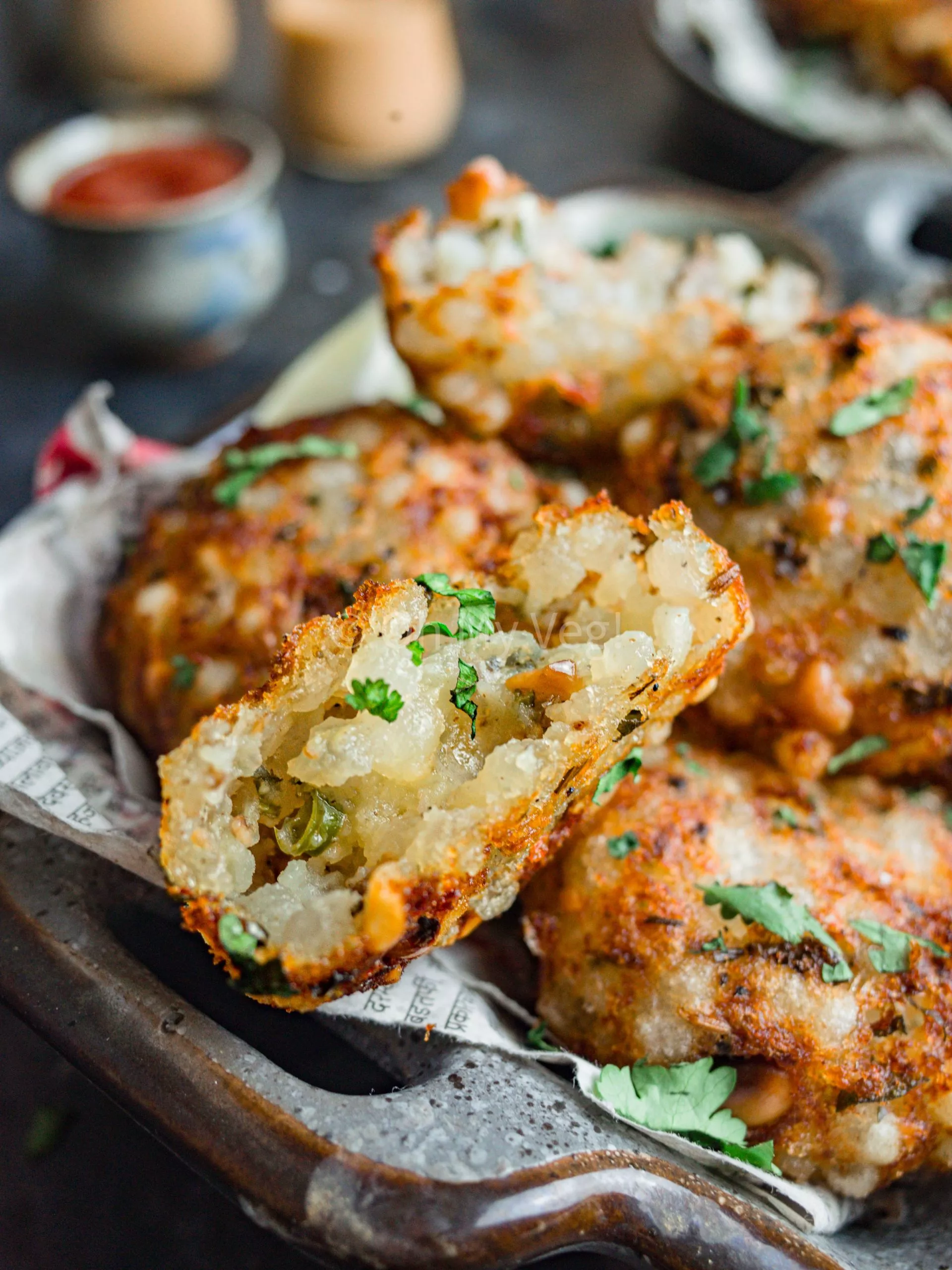
How to Serve Vegan Sabudana Tikki
If you’re unsure about how to serve this easy sabudana recipe for beginners, keep reading. First, though, let’s explore what the best dipping sauces for sabudana vada are:
- Sabudana vada with peanut chutney is my favourite combination. To make the traditional Maharashtrian chutney, blend together yoghurt with lemon juice, chilli paste, roasted peanut powder, cumin powder, and rock salt. Plus, I love to include a pinch of natural sugar to heighten the flavours.
- Sabudana vada with green chutney and tamarind chutney is a must-try classic. The herby coriander chutney pairs beautifully with the sweet, sour, and spicy tamarind notes.
- Sabudana vada with ketchup may sound strange, but ketchup is a popular choice to serve with any Indian snacks and street food. It’s surprisingly good!
Crispy sabudana tikki also tastes fantastic served alongside a pot of steaming hot masala chai, or chaha, as they say in Marathi.
Alternatively, why not include sabudana vada in a traditional Maharashtrian thali? Serve it alongside dishes like bharli vangi, batata rassa, seviyan kheer, or your favorite recipes.
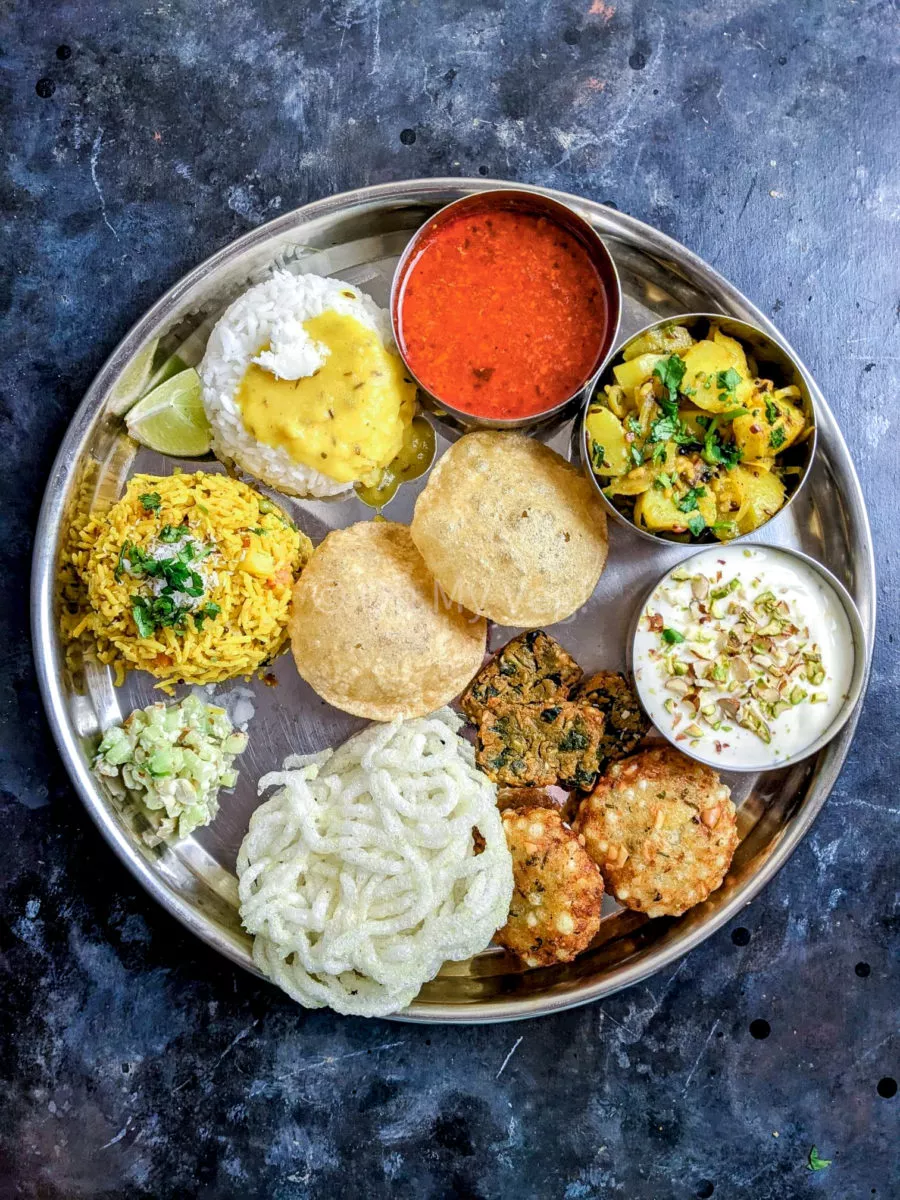
How to Store Gluten-Free Sabudana Vada for Later?
To store leftover sabudana tikki, keep them in an airtight container and refrigerate for up to three days. To reheat, lightly roast the sabudana vada on a tawa or frying pan to retain the crispy texture, or heat in the microwave for a faster solution that provides a soft texture.
You can also make this easy sabudana recipe ahead of time. Arrange the uncooked sabudana vada in an airtight container, layering parchment (baking) paper between the vada. Refrigerate the uncooked sago vada for up to three days, then cook as per the recipe.
Alternatively, freeze the uncooked sabudana vada in a single layer on a baking tray. Once completely frozen, transfer to a ziplock bag and freeze for up to three months. Cook from frozen (be careful of spitting in hot oil) or defrost.
This Sago Vada Recipe Is …

Maharashtrian Sabudana Vada (Special Upvas Recipe)
Ingredients
- 100 g sabudana tapioca pearls
- 2 medium white potatoes
- 40 g red peanuts raw
- 3 green finger chillies finely chopped
- 1 small handful fresh coriander cilantro, finely chopped
- ½ teaspoon cumin seeds
- ¼ teaspoon sugar
- ¼ whole lime or lemon juiced
- Himalayan rock salt to taste
- 1 litre oil to deep fry
Instructions
- Add 100 g sabudana to a bowl along with plenty of water. Cover and soak for least five to six hours. For convenience, I usually do this overnight.
- Once soaked, drain the sabudana and set aside.
- Bring water to a boil in a medium-sized saucepan. Add 2 medium white potatoes, and cook until fork-tender. Drain the water and cool the potatoes, then peel the skins.
- Add the potatoes to a bowl and mash thoroughly.
- Dry roast (no oil) 40 g red peanuts on a tawa over high high. Cook until the skins are blistered, then turn off the heat, and use a mortar and pestle to coarsely crush them.
- Add the soaked sabudana, mashed potatoes, roasted and crushed peanuts, 3 green finger chillies (chopped), 1 small handful fresh coriander (chopped), ½ teaspoon cumin seeds, ¼ teaspoon sugar, the juice of ¼ whole lime or lemon, and Himalayan rock salt (to taste) to a large bowl. Mix well.
- Grease your hands with oil (to stop the mixture from sticking/getting messy!), and shape the mixture into 10-12 vada.
- Add 1 litre oil to a deep fat fryer or large kadai/saucepan. Heat until it reaches around 180℃ (350℉). Once it comes to temperature, carefully lower the sabudana vada into the oil. Don't attempt to overcrowd the pan by cooking them all at once. Fry the sabudana vada for around three minutes, or until evenly golden-brown*.
- Repeat the cooking process for the remaining sabudana vada. Drain on kitchen paper and serve hot.
Notes
- To bake sabudana vada, form the patties as per the recipe. Line a sheet pan with parchment/baking paper, and lightly brush the sago vada with oil. Bake at 220 degrees Celcius (425 degrees Fahrenheit) for around an hour, carefully turning the patties halfway through baking.
- To air-fry sabudana vada, preheat your air fryer to 200 degrees Celsius (395 degrees Fahrenheit) and brush the basket with oil. Place the sabudana vada in the basket, brush the tops with more oil, then cook for 20-30 minutes or until golden. Turn them halfway through cooking.
- To cook sabudana vada in an appe pan, otherwise known as an appam pan, paniyaram pan, or paniyarakkal pan, add a little oil to the pan. Shape your sabudana vada into small balls instead of patties. Once the oil is hot, place the sabudana vada balls into the pan. Cook for around 2 minutes on each side or until golden, then turn.
Equipment
Nutrition
Frequently Asked Questions
Sabudana vada is also sometimes referred to as sago vada or tapioca fritters.
For the best sabudana vada, you should soak the tapioca pearls for at least 5-6 hours. Ideally, soak the tapioca pearls overnight, which will result in the best texture.
Yes, using instant tapioca pearls will cut down on the soaking time required for sabudana vada. Just be sure to read the packet instructions carefully, then proceed with this easy recipe.
To make crispy sabudana vada that isn’t oily, be sure to wait until the oil has adequately heated before deep-frying. If you use oil that’s too low in temperature, the fritters will absorb a lot more oil. Alternatively, you can bake, air-fry, or shallow fry your sago vada.
This authentic Maharashtrian sabudana vada recipe has a total of 380 calories per serving.




